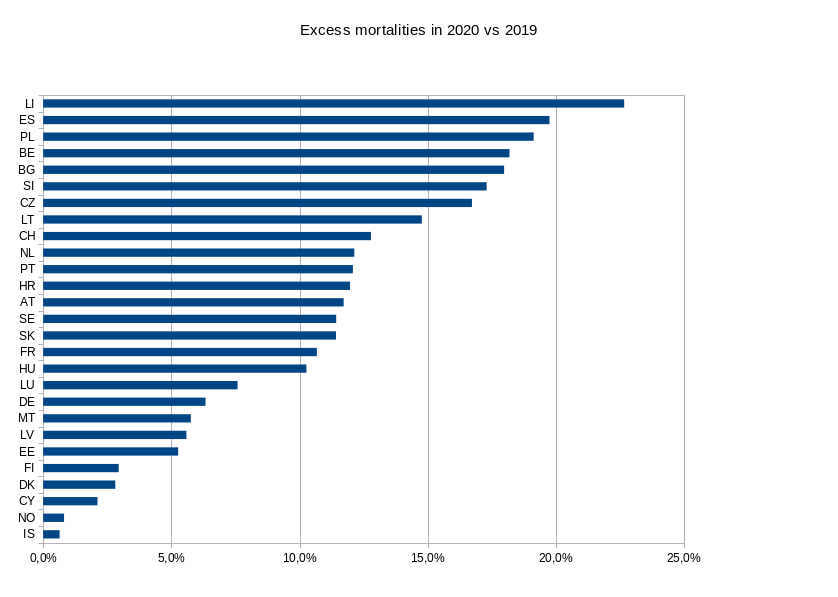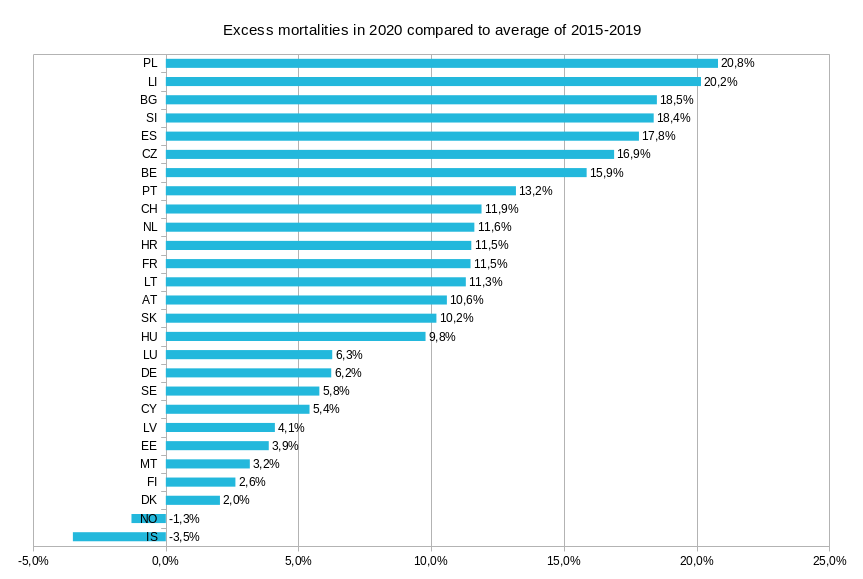Based on Eurostat data, I calculated excess mortality for 2020, both comparing it to the preceding year, and to the average of the five preceding years. Overly detailed explanation on how to find the data and do the calculations.
Excess mortality is the bottom line. Countries may have had higher or lower reported COVID19 deaths, some COVID19 deaths may have been missed, and restrictions may have had unintended and lethal consequences. Comparing countries based on reported COVID19 death rates has to be taken with a grain of salt. Slovakia is an example of the problem of what counts as a COVID19 death and what gets reported. The only metric that could be more meaningful would be to attempt to estimate total life-years lost. Someone who died at age 80 from COVID19 likely would die within a few years anyway. If, for instance, it turns out in some countries that there has been an upsurge in teenage and young adult suicides from enforced isolation, this is a greater tragedy. Figuring this out, however, would involve a lot more calculations, which I'm not going to dare to try until I can use Python and pandas well.
The latter makes the most sense, but I recently read an article in the Slovak newspaper DennikN, where a mixture of the two was used, and want to make it clear that this can have a radical effect on where a country comparatively ranks.
Romania, Greece, the UK and Italy don't have all 53 weeks of data yet for 2020, so I left them out. Spreadsheets containing the calculations are available here.
Note particularly the shift in position of Sweden. 2019 was, of the preceding five years, the one with the least mortality for them, significantly below the average.


- Log in to post comments
